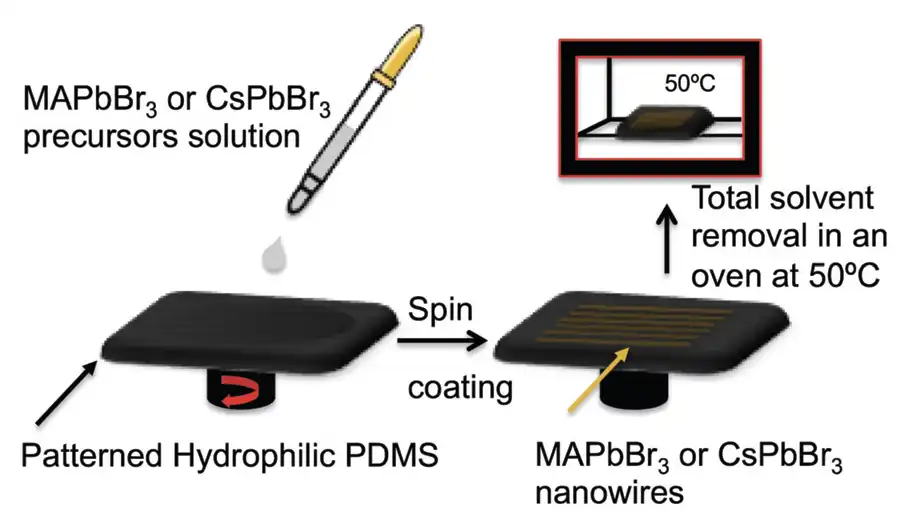
High refractive index nanowires are very attractive because of their waveguiding properties and their multiple applications. In this sense, metal halide perovskites, an emerging and appealing optoelectronic material, have also been tailored into nanowire structures. Here, we present an easy, low-cost and versatile method that has made possible to achieve nanowires of controlled and uniform width. The method has been applied here to all-inorganic and hybrid lead bromide perovskite (CsPbBr3 and CH3NH3PbBr3 respectively) materials. The procedure is based on the spin coating of precursor solutions, at room temperature, on a PDMS replica of the periodic grooves and lands of commercially available Compact Disc (CD) or Digital Versatile Disc (DVD) polycarbonate plates. The method can be applied for the synthesis of other material nanowires before being transferred onto other substrates. The obtained CsPbBr3 and CH3NH3PbBr3 nanowires exhibit high photoluminescence and guiding light properties along the material.



